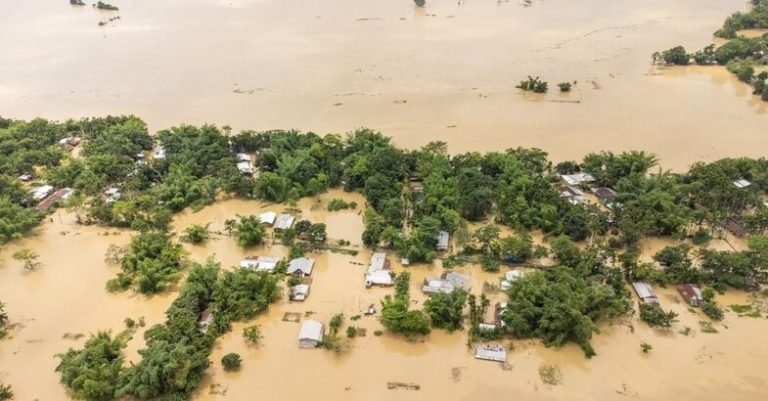The Climate Change Act 22 of 2024 has finally come into effect, ushering in a new era of environmental governance in South Africa. Long awaited and highly significant, this legislation sets in motion a framework that will bind public and private actors alike to the task of addressing climate change—not just as a distant threat, but as an urgent economic and social reality.
What lies ahead is not only regulatory transformation but also strategic recalibration, especially for carbon-intensive sectors like mining. As implementation unfolds, several trends, challenges, and opportunities are expected to define South Africa’s climate and development trajectory.
1. Sectoral emissions targets will redefine business planning
A key mechanism of the Act is the introduction of Sectoral Emissions Targets (SETs), which will apply to high-emitting industries. Mining—identified as a priority sector—is likely to receive one of the earliest and most stringent targets. The mining value chain, from exploration to processing, will need to reduce emissions from energy use, fugitive emissions from coal operations, and land-use changes.
Companies should expect SETs to become central to strategic planning. This may mean accelerating transitions to renewable energy, electrifying vehicle fleets, or rethinking extraction techniques to reduce emissions per tonne of output.
2. Carbon budgets will shift compliance from voluntary to mandatory
The Act introduces carbon budgets for major emitters, with legal obligations to stay within a predefined emissions ceiling. While previous climate reporting frameworks were largely voluntary or disclosure-based, this new structure will demand concrete emissions reductions.
Mining entities that previously focused on reporting carbon intensity may now face binding caps—with compliance tied to detailed mitigation plans. This signals a decisive shift: climate responsibility is no longer just reputational—it is now legal.
Read also: South Africa’s G20 presidency will focus on climate finance and debt relief
3. Legal risk and regulatory scrutiny will intensify
The Act grants regulatory authorities the mandate to enforce compliance, including penalties for failing to submit mitigation plans. While enforcement mechanisms for carbon budget breaches remain under development, businesses should prepare for legal accountability.
With the spotlight on environmental harm, especially after past disasters like flooding in KwaZulu-Natal, regulators may begin to link climate inaction to liability. Investors, too, will closely watch how firms respond to their new legal responsibilities.
4. Municipal and provincial government roles will expand
Climate action will no longer be confined to the national level. The Act requires provinces and municipalities to integrate climate change into development planning. This creates an opportunity for place-based transition strategies—especially in mining-heavy provinces like Mpumalanga, Limpopo, and the Northern Cape.
We can expect climate-responsive infrastructure projects, zoning adjustments, and local just transition frameworks to emerge. However, this also depends on capacity building and strong coordination—areas that historically have posed challenges in intergovernmental work.
5. A new mining narrative will begin to form
As the world moves toward clean energy, mining is uniquely positioned to supply critical minerals for the green economy. South Africa’s deposits of platinum, vanadium, manganese, and rare earth elements position it as a potential leader in “green mining.”
The Climate Change Act could be the lever that accelerates this pivot. Companies that innovate—by adopting cleaner methods, rehabilitating landscapes, and investing in circular practices—may not only meet compliance requirements but gain competitive advantage in global markets demanding traceable, low-carbon resources.
6. Stakeholder engagement will be pivotal
The Act’s implementation phase will require deep engagement between government, industry, labour, and civil society. Decisions around SET thresholds, carbon budgets, enforcement rules, and just transition support cannot be made in isolation.
Stakeholders—especially affected mining communities—will demand participation in shaping the path forward. Public trust and policy legitimacy will hinge on transparent consultations and visible outcomes.
7. Investment decisions will tilt toward climate-responsive projects
Banks, insurers, and institutional investors are already factoring climate risk into financing decisions. With a binding law now in place, we can expect climate legislation to become a key investment filter. Projects that align with national decarbonisation targets will attract more capital, while high-carbon ventures may struggle to raise funds or face higher premiums.
For mining firms, this means sustainability reports must now match real-world action—and climate compliance will be a gateway to both domestic and international financing.
With the Climate Change Act now in force, South Africa stands at the edge of a fundamental policy transition. No longer can emissions reduction be left to voluntary efforts or patchwork regulations. The framework is now national, binding, and sector-specific.
Mining, long the bedrock of the economy, must now become the bedrock of a low-carbon future—through innovation, adaptation, and collaboration. The next 12 to 24 months will be crucial as regulations are finalised, targets are formalised, and businesses begin to adjust.
The success of this Act will depend not just on what is written into law, but on how boldly and inclusively it is implemented. South Africa has chosen the path. The test now is to walk it—firmly, fairly, and with foresight.
Source link : View Article
Author
-

Lisa Matata is a digital media strategist at Impact Africa Consulting Limited, where she contributes to sustainability-focused communications and digital engagement. She is also a journalist for Africa Sustainability Matters, covering topics such as climate policy, ethical AI, and sustainable development across Africa. Her work highlights the intersection of technology, policy, and environmental responsibility on the continent.



